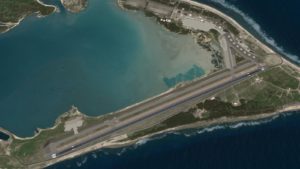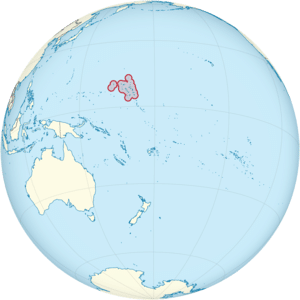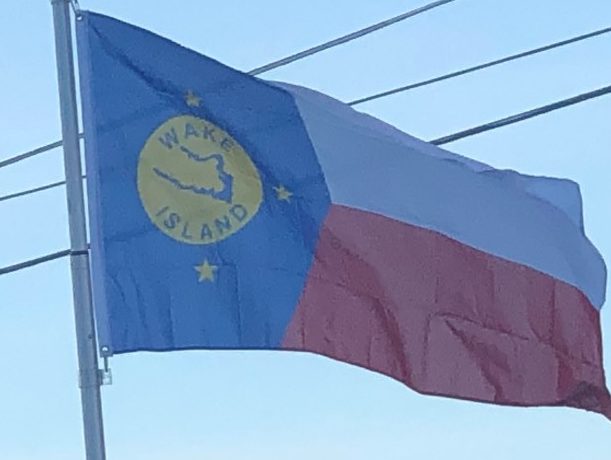The 611th Air Support Group (ASG), a U.S. Air Force unit based at Joint Base Elmendorf-Richardson in Anchorage, Alaska took over control of Wake Island from the 15th Wing on October 1, 2010.
On September 27, 2014, President Barack Obama issued Executive Order 9173 to expand the area of the Pacific Remote Islands Marine National Monument out to the full 200 nautical miles U.S. Exclusive Economic Zone (EEZ) boundary for each island. By this proclamation, the area of the monument at Wake Island was increased from 15,085 square miles to 167,336 square miles.
On November 1, 2015, a complex $230 million U.S. military missile defense system test event, called Campaign Fierce Sentry Flight Test Operational-02 Event 2 was conducted at Wake Island and the surrounding ocean areas.
Demographics:
Wake Island has no permanent inhabitants and access is restricted. However, as of 2017, there are about 100 Air Force personnel and American and Thai contractors resident any given time.
Transportation:
Aviation:
Air transportation facilities at Wake are operated by the United States Air Force at Wake Island Airfield in support of trans-Pacific military operations, western Pacific military contingency operations and missile launch activities.

The 9,850-foot-long runway on Wake is also available to provide services for military and commercial in-flight emergencies. All aircraft operations and servicing activities are directed from base operations, which is manned Tuesday through Saturday 8 am – 4 pm. Aircraft ramps are available for processing passengers and cargo, and for refueling up to 36 aircraft types. Although there is only one flight scheduled every other week to transport passengers and cargo to Wake, approximately 800 aircraft per year use Wake Island Airfield.
Ports:
Although Wake Island is supplied by sea-going barges and ships, the island’s only harbor between Wilkes and Wake is too narrow and shallow for sea-going vessels to enter. The Base Operations Support (BOS) contractor maintains three small landing barges for transferring material from ships moored offshore to the dockyard in the harbor. Off-load hydrants are also used to pump gasoline and JP-5 fuels to the storage tanks on Wilkes. The landing barges and recreational offshore sport fishing boats are docked in the marina.
Roads:
Transportation on Wake Island is provided by contractor or government-owned vehicles. The primary road is a two-lane paved road extending the length of Wake Island to the causeway between Wake Island and Wilkes Island. Generally, the road network is suitable for low-speed, light-duty use only. Wake Island’s paved roadway network has been adequately maintained to move materials, services, and personnel from the airfield on the southern end to the personnel support area on the northern end. Modes of transportation include walking, bicycles, light utility carts, automobiles, vans and larger trucks and equipment.
Territorial Claim by the Marshall Islands:
The Republic of the Marshall Islands has claimed Wake Island which is known by the name Enen-kio.

In 1973, Marshallese lawmakers meeting in Saipan at the Congress of Micronesia, the legislative body for the Trust Territory of the Pacific Islands, asserted that “Enen-kio is and always has been the property of the people of the Marshall Islands”. Their claim was based on oral legends and songs, passed down through generations, describing ancient Marshallese voyages to Wake to gather food and a sacred bird’s bone wing used in traditional tattooing ceremonies.
